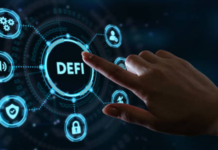
What Is Blockchain?
Blockchain maintains an asset provenance trail at every step of the process. This allows consumers to raise concerns about the environment, human rights, or if the industry is plagued by counterfeiting or fraud.Customers can view the origin directly through the process. Additionally, traceability data may reveal inefficiencies in the supply chain. B. Awaiting shipment at the loading dock. Additionally, paper-based methods are time consuming, prone to human error, and involve third parties. According to 2022 data, there are approximately 82.22 million blockchain wallet users worldwide. This technology stores documents and transaction details, eliminating the need to exchange documents. Clearing and settlement are therefore faster as there is no need to check multiple ledgers. These factors are expected to boost growth of the blockchain market over the forecast period. Blockchain is a technology that tracks users’ digital transactions across multiple systems for decentralized data storage. The digital economy has evolved significantly over the past few years as the value of cryptocurrencies like Bitcoin has increased exponentially in recent years.
Cryptocurrencies are underpinned by this technology. Its main function is to track the value and ownership of cryptocurrencies through a cryptographic ledger. The advanced features of this technology can reduce your digital marketing costs by removing the middleman. It also reduces the cost of search engine marketing by eliminating the need for third-party providers such as Google, Facebook, etc. The best-known application of this technology is cryptocurrencies. Cryptocurrencies are digital currencies used for buying and selling over the internet. Cryptocurrencies can be used all over the world as a kind of digital money. Cryptocurrencies use this technology to act as a public ledger and an enhanced cryptographic security system, as online transactions are always recorded and protected. Cryptocurrency theft is much more difficult as each cryptocurrency has an identification number that is accessible only to its owner. Cryptocurrencies reduce the need for central banks and separate currencies. As a result, crypto can be sent anywhere, to anyone, without the need for currency exchanges or central bank intervention. On June 8, 2022, PayPal enabled users to send digital currency to third-party wallets or exchanges. This feature is currently available to a small number of customers in the US, but we plan to roll it out nationwide in the near future. Initially, it will support Bitcoin, Bitcoin Cash, Ethereum and Litecoin.
Types of Blockchains In 2022
1. Public Blockchains
- A public blockchain is an open, decentralized computer network accessible to anyone who wants to request or verify (check correctness) transactions. Those who validate transactions (miners) receive rewards.
- Public blockchains use proof-of-work or proof-of-stake consensus mechanisms (discussed below). The two popular examples of public blockchains are the Bitcoin and Ethereum (ETH) blockchains.
- Additionally, the large number of network participants participating in a secure public blockchain protects the block from data breaches, hacking attempts, or other cybersecurity issues. Blockchain are more secure when there are more participants. Public blockchains can be protected with automated verification methods and encryption (such as cryptocurrency blockchains) that prevent individual entities from changing information on the chain, or they can be changed by anyone.
2. Private Blockchains
- Private blockchains are not public and have restricted access. Applicants must have permission from the system administrator. These are usually managed by one of her entities. In other words, it is centrally managed. For example, Hyperledger is a private blockchain with permissions.
- Participants can join the private blockchain network only by invitation whose identity or other required information has been authenticated and verified. Verification is done by the grid operator or by a well-defined set protocol implemented by the grid through smart contracts or other automated approval methods.
- A private blockchain controls who can join the network. If the network can mine, its private nature allows you to control who can run the consensus protocol that determines mining rights and rewards. Also, the common ledger can only be owned by selected users. The Owner or Operator reserves the right to overwrite, edit, or delete any desired entry in the Blockchain as desired or at its sole discretion.
3. Hybrid Blockchains or Consortiums
- A consortium is a combination of public and private blockchains, including centralized and decentralized capabilities. For example, R3, Energy Web Foundation, Dragonchain,.
- There is no 100% consensus on whether these are different terms. Some people distinguish between the two, others think they are the same. Hybrid blockchains are often referred to as a combination of public and private blockchains. It combines the essential components of both public and private blockchains, combining the best public and private blockchain protocols to keep your transactions and data private. However, if desired, they can also be verified, for example by granting access via a smart contract. Although stored within the network, personal information can still be verified.
4. Sidechains
A sidechain is a blockchain that runs parallel to the mainchain. This allows users to move digital assets between two different blockchains on her, increasing scalability and efficiency.
A sidechain is a separate blockchain that is connected to its parent blockchain with bidirectional pins. A two-way linkage allows the exchange of assets between the parent blockchain and the sidechain at a pre-determined rate. The original blockchain is commonly called the “main chain” and the additional blockchains are called “side chains”. Blockchain platform Ardor calls its sidechains “child chains”.
What Are Some Benefits of Blockchains In 2022
- Innovating:
- Industry-leading companies are researching and implementing blockchain-based systems to solve stubborn problems and improve long-standing troublesome practices. Field cited the use of blockchain to verify information in a job seeker’s resume as an example of such an innovation. Research consistently shows a high rate of people falsifying resumes, forcing recruiters to do the time-consuming task of manually verifying information.
- But the program, Pilot, which allows participating universities to put data about alumni and awarded degrees on the blockchain, makes it accessible to approved hiring managers, allowing them to find out the truth quickly and efficiently, it has helped solve both problems.
- Immutability:
- With blockchain, every transaction is dated and time stamped, leaving a permanent record. Blockchain can therefore be used to track information over time, enabling secure and reliable auditing of information. (This contrasts with error-prone paper-based filings and outdated computer systems that can be damaged or decommissioned.) digitized and monitored for changes in property ownership. Potential this advantage hands.
- Blockchain records cannot be altered or manipulated. Bitcoin has never been hacked. New transaction blocks are added only after a complex mathematical problem has been solved and verified by a consensus mechanism. Each new block has a unique cryptographic key derived from the information in the previous block and that key is added to the formula.
- Trust & Transparency:
- Blockchain creates trust between different entities where trust does not exist or is not proven. As a result, these companies are happy to engage in transactions or transactions involving data sharing that they may not otherwise have done or require intermediaries. Enabling trust is one of the most-cited benefits of blockchain. Its value can be seen in early blockchain use cases that facilitate transactions between companies that need to exchange data and payments without a direct relationship.
- Bitcoin, and cryptocurrencies in general, are prime examples of how blockchains enable trust between participants who do not know each other. Public blockchains are open-source software, so anyone can access and view transactions and their source code. You can also use the code to create new applications and suggest improvements to the code. Proposals are approved or rejected by consensus.
- Lower Costs:
- The nature of blockchain can also reduce the cost of doing business. This streamlines the processing of transactions. It also reduces manual tasks such as data collection and manipulation, and simplifies reporting and auditing processes. Experts point to savings for financial institutions using blockchain, saying blockchain’s ability to streamline clearing and settlement translates directly into cost savings in the process.
- More broadly, blockchain helps companies reduce costs by removing the middlemen (vendors and third-party vendors) who traditionally provide the processing that blockchains can perform. Traditional financial systems pay third parties, such as banks, to process transactions. Blockchain eliminates these middlemen, reduces fees, and some systems pass fees back to miners and stakers.
How to Invest in Blockchain Technology In 2022
- Choose your blockchain-based assets
- Choose a cryptocurrency exchange or brokerage
- Fund your cryptocurrency account with fiat currency
- Buy shares in companies using blockchain
- Invest in companies with Bitcoin on their balance sheet,
- Buy cryptocurrencies like Bitcoin or Ethereum directly on Centralized Finance (CeFi) or Decentralized (DeFi) exchanges.
- Invest in crypto exchange-traded funds (ETFs).
- Invest in crypto mining companies such as Riot, Hive, and Marathon.
- Buy crypto hardware and mine cryptocurrency yourself.
- Decide where to store your crypto
- Invest in mining pools.
- Treat blockchain as a high-growth, high-risk sector
- Watch out for new laws and regulations
- Concentrate on the bitcoin connection
Recent Developments in the Blockchain Market
- Market players include IBM Corporation, Accenture, Intel Corporation, Amazon Web Services, Inc., Oracle, Huawei Technologies Co., Ltd., SAP SE, Blockchain Foundry, Inc., NTT DATA Corporation, Infosys Limited, BigchainDB GmbH is included, and SpinSys.
- On March 11, 2021, Amazon Web Services, Inc. launched Ethereum, a decentralized blockchain framework for managed blockchains. His Ethereum on managed blockchain platform allows developers to easily create Ethereum nodes without having to deal with setting up and managing infrastructure. This includes encrypting data in transit, monitoring and exchanging node state, and scaling nodes as needed.
- On June 22, 2020, IBM Corporation announced the new IBM Blockchain 2.5 platform for multi-party systems. The platform uses blockchain technology to provide fast, easy and transparent transactions. In addition to multi-cloud services and IoT connectivity, multi-party systems provide real-time insights, transportation and logistics management to support customers in investment decisions.
- On January 6, 2022, Google Cloud partnered with TickerPlant, a subsidiary of 63 Moons Technologies Limited, to develop the blockchain and CryptoWire ecosystem. In addition to simplifying digital assets and blockchain, CryptoWire aims to empower hobbyists and professionals to make informed decisions by providing deep insights and cutting-edge knowledge.











